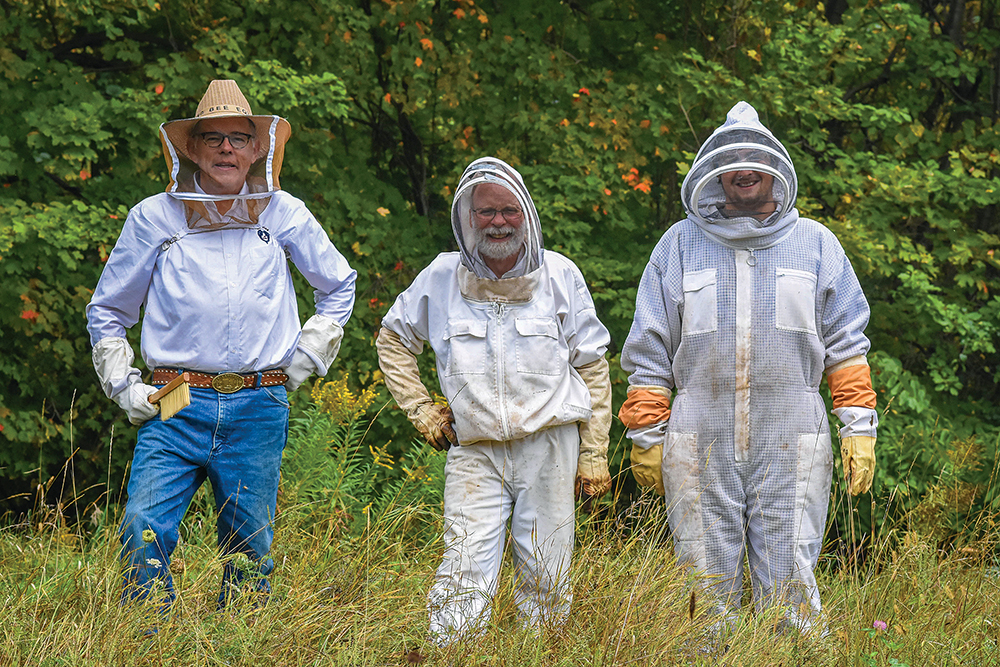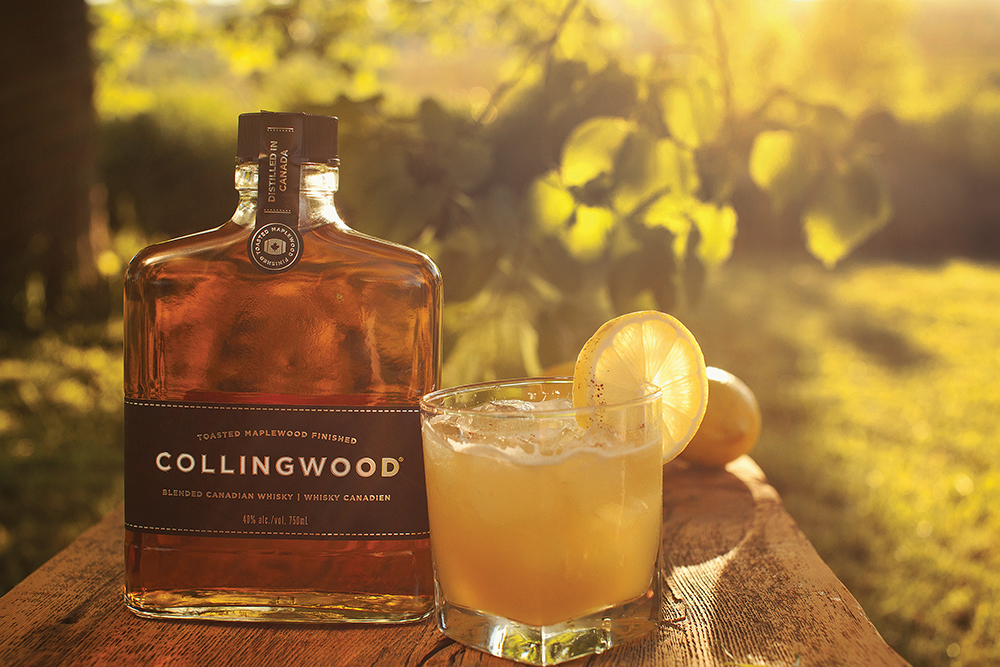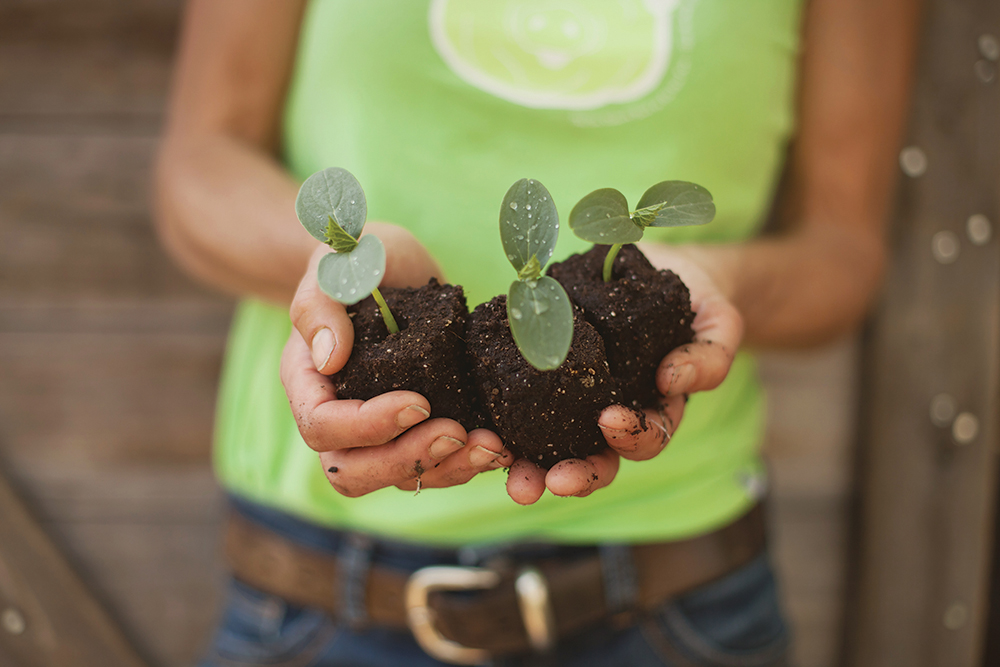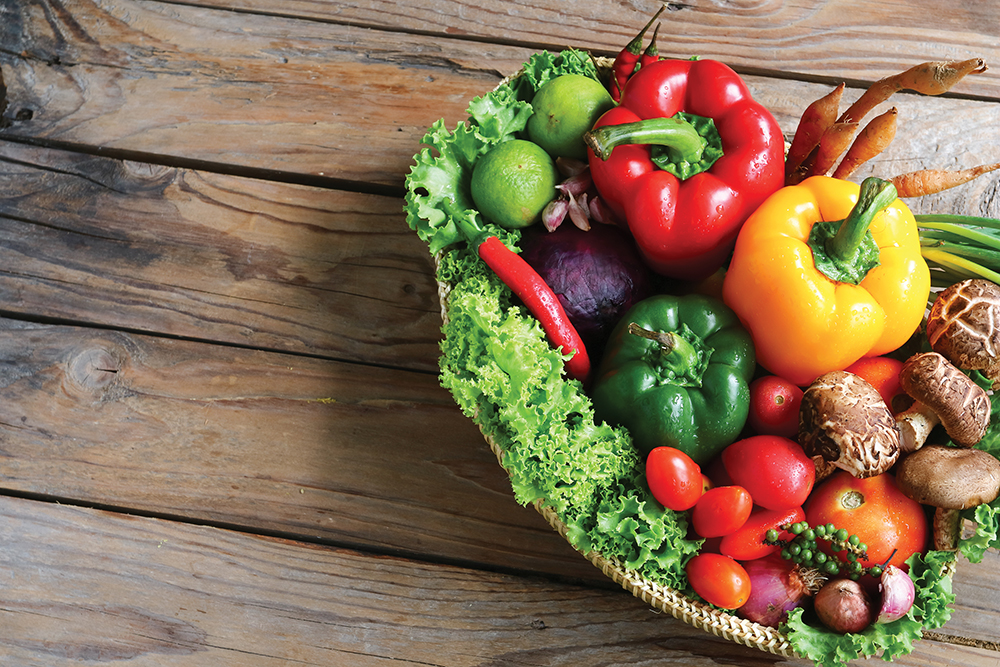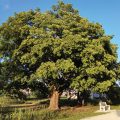Local natural sweeteners trump sugar in every way
by Emily Worts ❧ photography by Richard Galloway
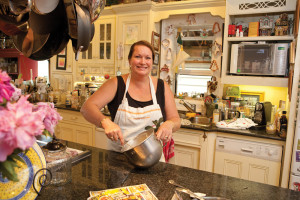 We all know that too much of the sweet stuff can be bad for us, but sugar is a hard habit to break. Substituting sweeteners like maple sap, maple syrup and honey, all of which are accessible in our area, for refined sugars could help eliminate a lot of what is bad for us without giving up the sweet flavours our taste buds crave. Sugar is a natural sweetener, found in plants and fruits. However, the refining process used to make granulated sugars is what makes it bad for us.
We all know that too much of the sweet stuff can be bad for us, but sugar is a hard habit to break. Substituting sweeteners like maple sap, maple syrup and honey, all of which are accessible in our area, for refined sugars could help eliminate a lot of what is bad for us without giving up the sweet flavours our taste buds crave. Sugar is a natural sweetener, found in plants and fruits. However, the refining process used to make granulated sugars is what makes it bad for us.
Our addiction to sugar has created an epidemic of health and immune problems including vitamin and mineral deficiencies, adrenal fatigue, diabetes and obesity. Refined sugar doesn’t offer many benefits, except the sweet taste many of us are addicted to. Honey and maple syrup, on the other hand, not only sweeten, they are actually good for us in moderation. Add to that the fact that honey and maple are produced locally, and the choice of what to put in your next cup of tea or coffee, or add to your next batch of muffins, should be a sweet one to make.
Maple Benefits
Maple syrup can replace sugar in almost every way, and is a relatively healthy alternative. Recent studies (April 2011) identified 54 compounds in maple syrup, five of which have never been seen in nature, and many with antioxidant activity and potential health benefits, putting maple syrup in the same ‘super food’ category as blueberries and green tea. Other health benefits of maple syrup are well documented – it promotes a healthy heart, boosts the immune system and lowers the risk of prostate cancer.
Maple syrup is made by tapping the sap of the sugar, black or red maple tree in the spring. The sap is clear, almost tasteless and very low in sugar content when it is first tapped. Although used for centuries as a refreshing drink, maple sap is finally gaining some recognition as a horticultural commodity in its own right.
Maple Syrup
Although maple sap has been used for hundreds of years, it is the syrup we think of when looking at the maple tree. To make syrup, sap is boiled extensively, evaporating the water and producing syrup with a sugar content of 60 per cent. Maple syrup, like wine, has a terroir and local producers think Grey Bruce syrup has the best flavour because of our limestone-based soil.
Ten years ago Gail and Richard O’Brien, owners of Uncle Richard’s Maple Syrup, turned a weekend property and a hobby into a full-scale, full-time maple syrup business. Uncle Richard’s Maple Syrup, near Flesherton, is no longer a cottage industry but a high-end, high-tech operation with stainless steel equipment producing syrup from about 50 acres of sugar bush on the O’Briens’ home farm plus more on other properties totalling about 3,000 taps. The result is some of the finest maple syrup in the world, according to Richard. The O’Briens showcase their syrup and value-added products (including hard-to-find maple sugar) at shows and fairs from June to November. Gail oversees the judging for maple syrup at the Royal Winter Fair, making her an authority on all things maple.
“We are extremely particular about what we put out there; that’s how we built our business,” says Richard. “There is quite a demand for good quality syrup in the last five years as people have discovered the health benefits.”
In fact, says Richard, there has been more research done on the maple industry in the last five years than in the previous 50.
Maple production isn’t just a spring effort and the team at Uncle Richard’s works throughout the year. Although trees are tapped in the spring, they bottle syrup every two to four weeks for 12 months (this past May they bottled every week to keep up with demand). The syrup is held in stainless steel barrels, reheated and refiltered, before it is bottled.
“You have to be prepared to put the time and effort in,” says Richard of the business. “It’s always been what the farmer does in the spring and by the time it’s finished you’re out in the fields. I understand that history and it is great people are doing it because maple is so healthy, but a lot of people haven’t realized the economic benefit of maple production.”
Canada produces about 85 per cent of the world’s maple syrup, selling about 30,000 tonnes, valued at $147 million, to 40 countries. The only other horticultural commodity export that surpasses syrup is frozen French fries. Surprisingly, large or even mid-size producers are hard to find in our area but there are a lot of people making syrup in smaller batches, available at local markets and stores, or when in season, on the side of the road.
Maple Sap
Keith Harris started thinking about bottling maple sap as an alternative to bottled water three years ago. All the negative publicity bottled drinking water was getting, including the plastic bottles it comes in, had him brainstorming alternatives. He turned to maple sap and thought about taking it from the tree to the bottle as a cool, clear, crisp drink.
“It’s a Canadian experience,” he says. “It’s filtered and enhanced by nature and I thought maybe this could replace bottled water.”
In the fall of 2009 Harris did a trial run (yes, trees can be tapped in the fall rather than the spring, but the sap is less sweet and less rich). From that run he bottled 3,200 bottles and got his Kiki Maple Sweet Water into 10 stores with limited sales (Kiki is the Japanese word for tree and life energy). The concept was well received and in the spring of 2010 Harris ramped up production to 60,000 bottles. Kiki was accepted by the Ontario Natural Food Co-op, was picked up by Whole Foods, and is now in over 150 locations in five provinces.
Kiki Maple Sweet Water is 100 per cent real sap. Serve chilled in a glass bottle or in a glass over ice. You first taste water, followed by a slight sweetness with a finish of maple.
Harris soon introduced two other flavours, Lemon-Ginger and Lemon-Mint, to his line of sap water. There are over 80 nutrients in the water, including what Harris calls the “Golden Triangle” of calcium, potassium and magnesium. “Koreans have been drinking it by the gallon for centuries,” says Harris who hopes to tap into the Japanese and Korean markets soon. “It’s like a natural Gatorade.”
The Baker’s Secret
Locally famous baker, Heath Needles, notices the difference in her baking.
“With handmade things (like maple syrup and honey) you are getting better ingredients and better quality, and it’s more valuable. You end up with a superior product,” says Needles. Needles, who grew up near Mansfield with five brothers and sisters, a father who worked the farm and a mother who brought in the household income, lived what she calls a “pioneer lifestyle.”
“We grew and made everything; there wasn’t any money to buy anything,” she says. Necessity led to the use of natural sweeteners, harvested on the family farm, instead of expensive sugars.
For the past 17 years, Needles has been baking for a living, providing brides with exquisite cakes and stores like the 100 Mile Store in Creemore with weekly treats. During sugaring-off season, her toasted oatmeal and maple scones, blueberry and maple muffins and maple mousse grace the counter. Throughout the summer Creemore Farmer’s Market enthusiasts often start their journey through the stalls with one of Needles’ maple cinnamon rascals, available at the 100 Mile Store. “Anything maple and I’m happy,” she enthuses.
Needles, who is still baking and selling the same chocolate cake she learned how to make when she was nine, collects classic Canadiana cookbooks and holds onto traditional recipes using ingredients sourced within a farmer’s reach, including natural sweeteners.
From these books she has learned how to use maple in her savoury dishes as well as the sweet, like maple syrup baked beans, peameal bacon with apple cider and maple syrup, and ham baked in sap (as the sap cooks down it leaves a mild maple flavour and sweetness, says Needles).
“It’s something you try because you can,” says Needles of where we live and all the sap and syrup surrounding us. “It’s always interesting to me that everything is 100 mile; my life was a 10-mile one.” Everything comes full circle and with new ‘scientific’ studies ‘revealing’ the health benefits of maple, we are being reintroduced to what most people, living in connection with the land, have always known. We’re paying attention now because we’re learning it’s good for us.
“This is what people did. It’s all they had,” says Needles of ingredients like honey and maple syrup. “There’s so much we left behind, like our common sense. We’re coming around to using our brains in our cooking again.”
Honey
Honey is another excellent and local alternative to sugar, with many unique properties of its own.
Raw honey is a great natural source of carbohydrates, providing our bodies with strength and energy. The glucose in honey is absorbed quickly, which is great for our body’s performance and endurance, while the fructose is absorbed more slowly, providing sustained energy and reducing muscle fatigue. The next time you go for a run or a walk, try a spoonful of honey before you set out and notice the difference.
Honey also keeps levels of blood sugar fairly constant compared to other types of sugar, which means you might get more of a boost from your morning cup of tea or coffee if you add honey rather than sugar. Mid-afternoon, instead of being tempted by yet another cup of coffee, try warm water with honey and lemon to keep you going. Honey also has a low glycemic index, so it makes sense for those trying to lose weight, and it is rich in antioxidants, which can protect your body from a variety of illnesses. Next time you pack your child’s lunch, or your own, why not pack a sandwich of honey, butter and ham – it’s tasty and it will boost your immune system. As if that’s not enough, honey can also treat insomnia, make your skin look and feel healthier, help wounds heal and promote digestion.
Al Lockhart, of the Honey House in Clarksburg, is on his way to several local apple orchards, where he hires out his bees to pollinate apple trees in blossom. Hiring bees is a reality in a world where modern commercial farms rule and wild bees, which need diverse foliage, no longer thrive in this landscape. This service supplements the Lockharts’ income from their Beaver Valley Gold Honey and the Honey House.
When Keri and Al Lockhart bought the business from Keri’s father 14 years ago, they had 650 bee colonies. Today that number has been reduced to 250.
“It has been somewhat purposeful, but Mother Nature helped us do that too,” says Keri of the reduced number of hives. “Mother Nature rules.”
Due to increased disease and environmental factors, the Lockharts have to spend more time managing each colony to keep the bees healthy, compared to 14 years ago when the colonies basically took care of themselves. “It’s not rocket science working with bees, but it’s changing,” says Keri. “The world is changing very quickly; it’s scary. My dad used to have two to three per cent losses.”
Today an Ontario beekeeper can expect 20 to 100 per cent losses because of Colony Collapse Disorder (CCD), a global reality for the last five to ten years. Around 2006, massive numbers of bees, here and around the world, began to disappear over the winter, leaving only the queen and a few companions in the hive. Many theories behind CCD are circulating and chances are it’s a combination of chemicals on agricultural fields, monocropping, disease and parasites (it’s even been linked to cell phone usage), but without a single cause, fighting CCD is next to impossible. Whatever the cause, bees are becoming weaker and more susceptible to viruses.
Not only are colonies decreasing; so, too, are the number of honey producers. The Lockharts are one of the only mid-size honey producers left in this area, making it harder for people to find local honey, and making Beaver Valley Gold a hot commodity. “We have a guy that will buy our entire crop, but we won’t sell it to him,” says Keri. “We want local people to have local honey. It’s a bit worrisome for some communities.”
The Lockharts have a huge following and many of their customers are from European backgrounds.
“With a lot of my lower-European customers, they still have grandma living in the house, showing them how to use things,” says Keri. She soaks up this traditional knowledge, centred on the many benefits and uses of honey, and uses it to make several bee-based products including salves, lip balms, specialty honeys and candles. Keri has also acquired a wealth of knowledge on how to use honey to replace sugar, from her upbringing around bees and honey.
“We don’t have sugar in our house,” says Keri. She says the Canadian way to use honey is limited to putting it on cereal, toast and in your tea.
“Honey is more beneficial than just being a sweet. It can be used for anything; that’s why it’s so much fun because you can market it in so many different ways.”
Keri, like many of her clients, uses honey for everything from baking and cooking to medicine and beauty products. Sharing this knowledge, along with information on bees and the honey-making process, is a huge part of what the Lockharts do. The Honey House is more than just a place where honey is made and sold; it has a learning centre for drop-in customers and large groups who want to know more.
Beaver Valley Gold is not pasteurized or force filtered, resulting in honey with nutrients and flavours that only nature can produce.
One of the most delightful ways of enjoying honey is in its raw form. At the Honey House you will see honeycombs for sale to the left of the till.
“They’re very old fashioned; it reminds people of their grandmother,” says Keri of the beautiful honeycombs. “People’s eyes light up when they talk about it. My daughter eats it with a spoon.”
Heath Needles agrees; this is one of her favourite ways to enjoy honey.
“I just love the pure form of honey. There are such differences in flavour depending on whether it’s clover or wildflower or depending on where it comes from. It’s not unlike wine,” she says. “Every time I travel I bring home honey. I have an omnivorous appetite for trying everything.” Beyond honey buns or honey cakes, this liquid gold is found in all sorts of recipes.
“I use honey all the time,” says Needles. “It adds a depth of character to things I bake. It’s another layer of flavour.” Honey is hidden in muffins, breads, granolas, marinades, salad dressings and sauces. But honey is still a sweetener and like most things, everything in moderation. “It’s better tasting, but you can’t eat a whole cake just because it’s made with honey,” cautions Needles.
In an age where we are extremely conscientious of what we put in our bodies, natural sweeteners, like maple and honey, are once again in vogue. We are fortunate to have these sweeteners available to us locally and producers who willingly and enthusiastically share their knowledge and answer questions about their products. It is important to support these producers who put in so much of their time to make sure we receive an exceptional product. Whether producing sap water, syrup or honey on a large or small scale, production is labour intensive, meaning producers care as much about their product as we care about what goes into our bodies.
And what could be sweeter than that? ❧






